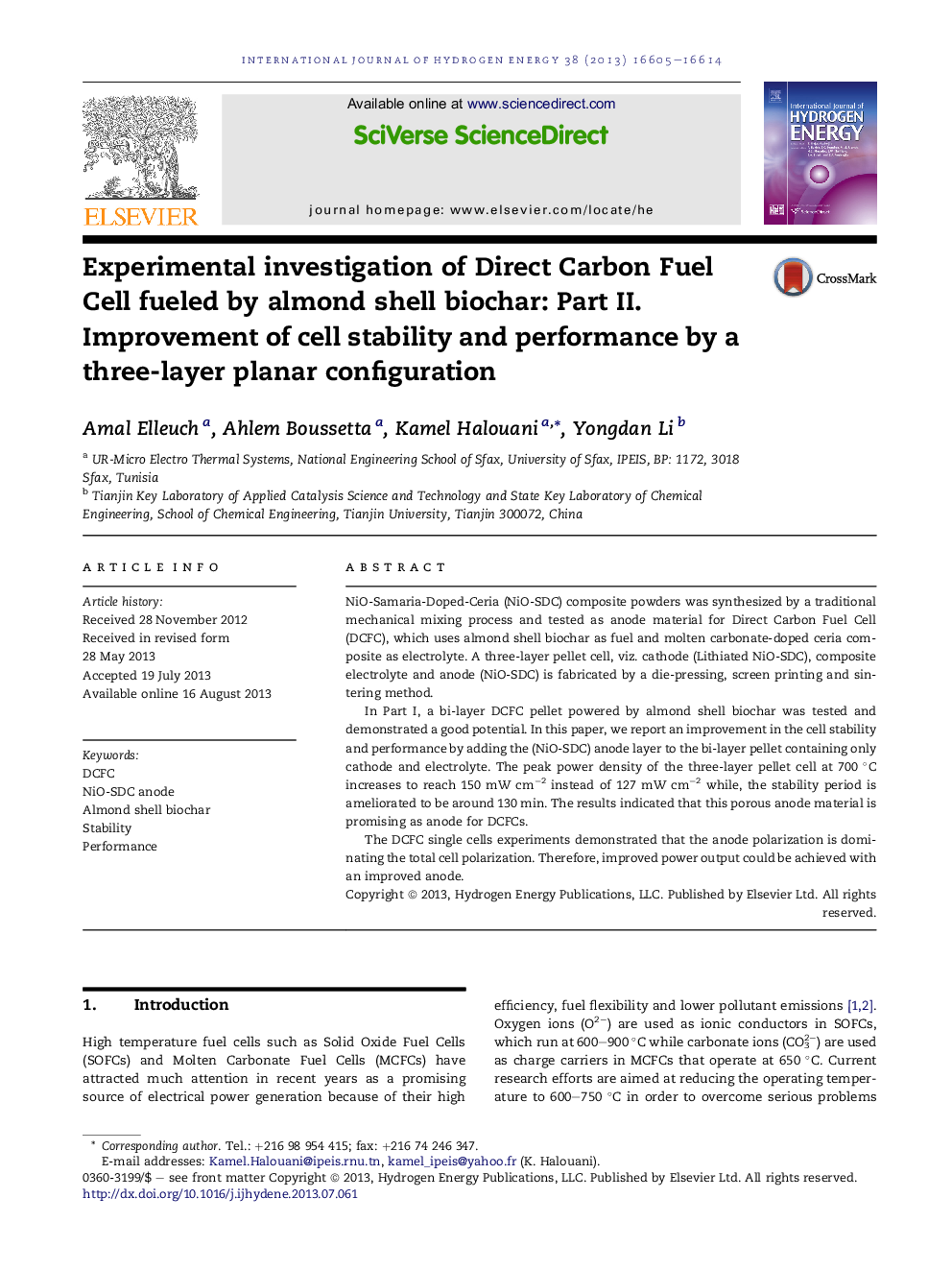| Article ID | Journal | Published Year | Pages | File Type |
|---|---|---|---|---|
| 1274228 | International Journal of Hydrogen Energy | 2013 | 10 Pages |
•NiO-SDC porous anode material is promising as anode for DCFC.•Stability of the three-layer pellet DCFC is relatively enhanced.•Performance of almond shell as fuel increases to 150 mW cm−2 at 700 °C.•Co-pressing technique is appropriate for composite cathode layer preparation.•Anode has the largest contribution to polarization.
NiO-Samaria-Doped-Ceria (NiO-SDC) composite powders was synthesized by a traditional mechanical mixing process and tested as anode material for Direct Carbon Fuel Cell (DCFC), which uses almond shell biochar as fuel and molten carbonate-doped ceria composite as electrolyte. A three-layer pellet cell, viz. cathode (Lithiated NiO-SDC), composite electrolyte and anode (NiO-SDC) is fabricated by a die-pressing, screen printing and sintering method.In Part I, a bi-layer DCFC pellet powered by almond shell biochar was tested and demonstrated a good potential. In this paper, we report an improvement in the cell stability and performance by adding the (NiO-SDC) anode layer to the bi-layer pellet containing only cathode and electrolyte. The peak power density of the three-layer pellet cell at 700 °C increases to reach 150 mW cm−2 instead of 127 mW cm−2 while, the stability period is ameliorated to be around 130 min. The results indicated that this porous anode material is promising as anode for DCFCs.The DCFC single cells experiments demonstrated that the anode polarization is dominating the total cell polarization. Therefore, improved power output could be achieved with an improved anode.
